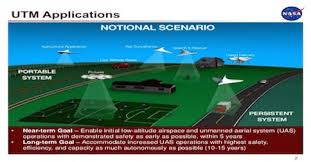
Breaking News
 Global Exclusive: The January 6th Pipe Bomber's Identity Has Been Discovered,...
Global Exclusive: The January 6th Pipe Bomber's Identity Has Been Discovered,...
 Capitol Police Officer Shauni Kerkhoff Identified as J6 Bomber...
Capitol Police Officer Shauni Kerkhoff Identified as J6 Bomber...
 Why Dual Engine Failure Changes Everything -- Louisville Crash Update
Why Dual Engine Failure Changes Everything -- Louisville Crash Update
 Transforming Storage Shelf / Workbench - Small Space Organization
Transforming Storage Shelf / Workbench - Small Space Organization
Top Tech News
 HUGE 32kWh LiFePO4 DIY Battery w/ 628Ah Cells! 90 Minute Build
HUGE 32kWh LiFePO4 DIY Battery w/ 628Ah Cells! 90 Minute Build
 What Has Bitcoin Become 17 Years After Satoshi Nakamoto Published The Whitepaper?
What Has Bitcoin Become 17 Years After Satoshi Nakamoto Published The Whitepaper?
 Japan just injected artificial blood into a human. No blood type needed. No refrigeration.
Japan just injected artificial blood into a human. No blood type needed. No refrigeration.
 The 6 Best LLM Tools To Run Models Locally
The 6 Best LLM Tools To Run Models Locally
 Testing My First Sodium-Ion Solar Battery
Testing My First Sodium-Ion Solar Battery
 A man once paralyzed from the waist down now stands on his own, not with machines or wires,...
A man once paralyzed from the waist down now stands on his own, not with machines or wires,...
 Review: Thumb-sized thermal camera turns your phone into a smart tool
Review: Thumb-sized thermal camera turns your phone into a smart tool
 Army To Bring Nuclear Microreactors To Its Bases By 2028
Army To Bring Nuclear Microreactors To Its Bases By 2028
 Nissan Says It's On Track For Solid-State Batteries That Double EV Range By 2028
Nissan Says It's On Track For Solid-State Batteries That Double EV Range By 2028
NASA Is Making A Drone-Traffic Control System

We have no flight-tracking system for the lower sky. There are rules and charts for keeping track of larger aircraft that carry human passengers and are piloted by humans onboard, but drones are small and fly low, which means we have to trust in drone pilot good behavior to keep drones away from risky places, like airports. Small drones, unlike other aircraft, don't broadcast their location, so tracking them in the sky is tricky. That's why the FAA is working with NASA to come up with an Unmanned Aerial System Traffic Management system. Or, essentially, air traffic control for drones.
Earlier today, NASA tested the system at six different FAA test sites. Those test sites are quite the geographic spread: Fairbanks, Alaska; Grand Forks, North Dakota; Reno, Nevada; Rome, New York; Blacksburg, Virginia; Bushwood, Maryland; and Corpus Christi, Texas. NASA first tested the system at just one site last fall.

 Carbon based computers that run on iron
Carbon based computers that run on iron

